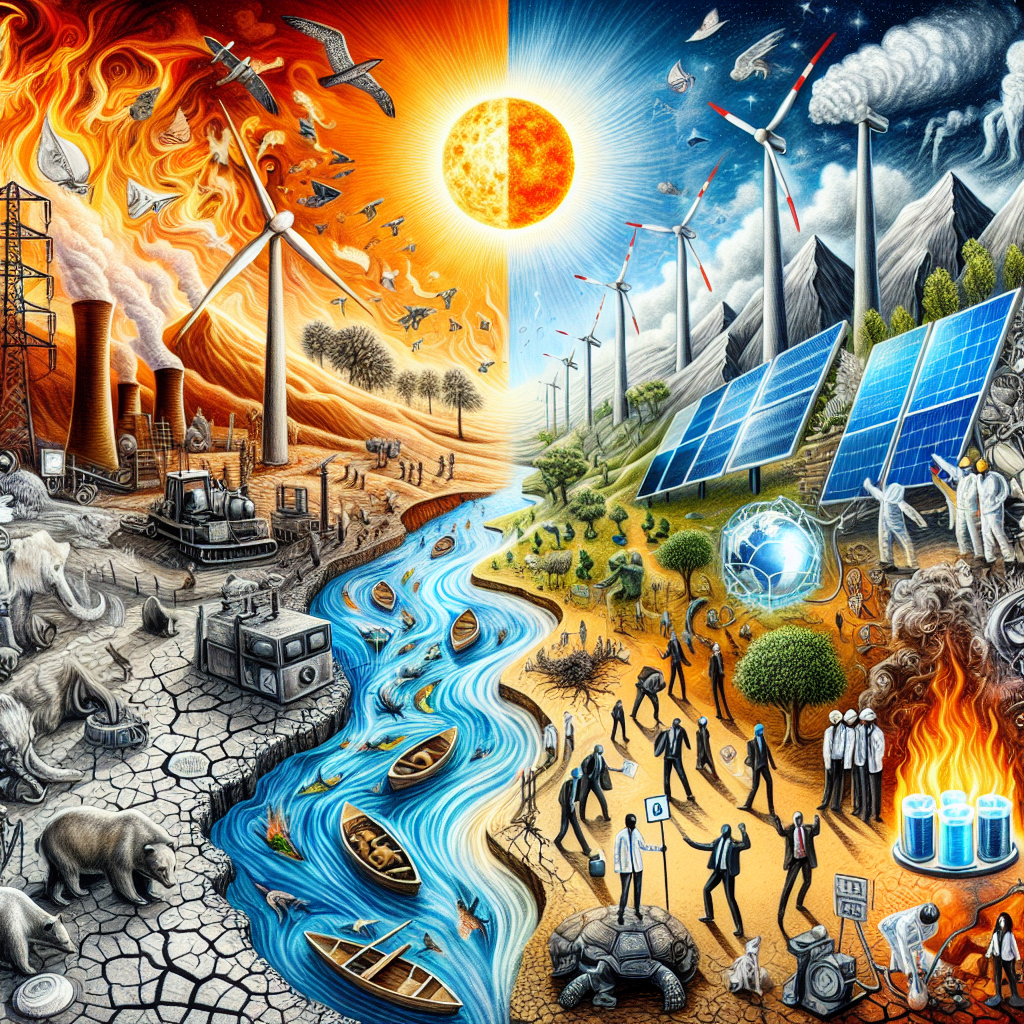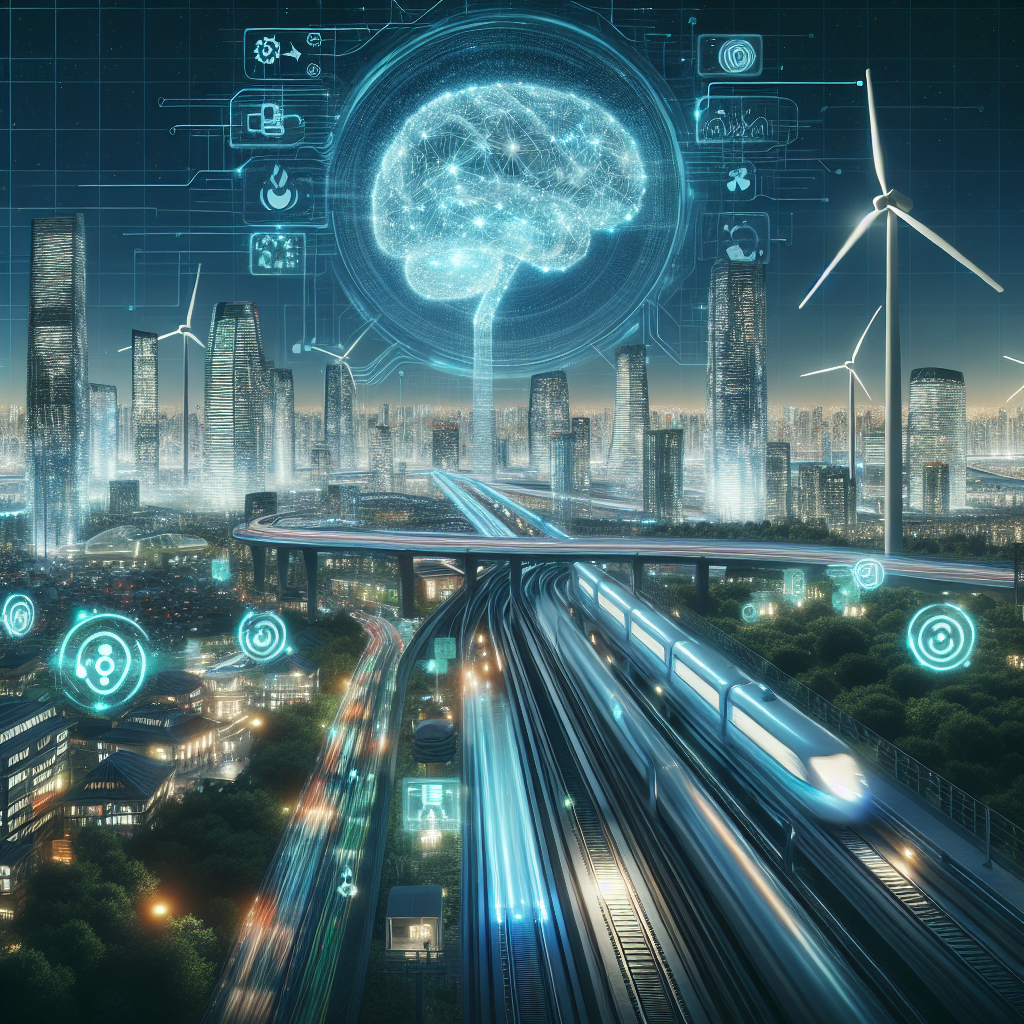-
Table of Contents
“Empowering you to make smarter and more sustainable energy choices.”
Introduction
Compare Energy Solutions is a company that specializes in providing energy solutions to individuals and businesses. We offer a wide range of services, including energy audits, renewable energy options, and energy management strategies. Our goal is to help our clients reduce their energy consumption and costs while also promoting sustainability and environmental responsibility. With our expertise and personalized approach, we strive to find the best energy solutions for each of our clients’ unique needs.
The Benefits of Switching to Renewable Energy Sources
In today’s world, the topic of renewable energy sources has become increasingly important. With the growing concern over climate change and the depletion of non-renewable resources, many individuals and businesses are looking for ways to reduce their carbon footprint and contribute to a more sustainable future. One solution that has gained significant attention is the switch to renewable energy sources. In this article, we will explore the benefits of switching to renewable energy and compare it to traditional energy sources.
First and foremost, renewable energy sources are considered to be much cleaner and more environmentally friendly than traditional energy sources. Unlike fossil fuels, which emit harmful greenhouse gases into the atmosphere, renewable energy sources such as solar, wind, and hydro power do not produce any emissions. This means that by switching to renewable energy, we can significantly reduce our carbon footprint and help combat the effects of climate change.
Another benefit of renewable energy sources is their infinite supply. Fossil fuels, such as coal and oil, are finite resources that will eventually run out. On the other hand, renewable energy sources are constantly replenished by nature, making them a more sustainable option for the long term. This also means that we are not dependent on other countries for our energy needs, reducing the risk of price fluctuations and geopolitical tensions.
In addition to being cleaner and more sustainable, renewable energy sources also have the potential to create new job opportunities. The renewable energy sector is rapidly growing, and as more and more individuals and businesses make the switch, there will be a higher demand for skilled workers in this field. This can lead to job creation and economic growth, benefiting both individuals and communities.
Moreover, renewable energy sources are becoming increasingly cost-effective. While the initial investment may be higher than traditional energy sources, the long-term savings can be significant. For example, solar panels may require a higher upfront cost, but they have a lifespan of 25-30 years and can significantly reduce or even eliminate electricity bills. This can result in substantial savings over time, making renewable energy a financially viable option.
On the other hand, traditional energy sources, such as coal and oil, are subject to price fluctuations and are heavily reliant on global market conditions. This can lead to unpredictable and often high energy costs for consumers. By switching to renewable energy, individuals and businesses can have more control over their energy costs and reduce their dependence on external factors.
Furthermore, renewable energy sources offer a more decentralized energy system. Unlike traditional energy sources, which are often centralized and require large power plants, renewable energy can be generated on a smaller scale. This means that individuals and communities can produce their own energy, reducing their reliance on large corporations and giving them more control over their energy supply.
In terms of reliability, renewable energy sources have also made significant advancements. While there may have been concerns in the past about the intermittent nature of solar and wind power, technological advancements have made these sources more reliable and efficient. Additionally, with the use of battery storage systems, excess energy can be stored for later use, ensuring a continuous and reliable energy supply.
In conclusion, the benefits of switching to renewable energy sources are numerous. From being cleaner and more sustainable to creating job opportunities and offering cost savings, renewable energy is a viable solution for a more sustainable future. While there may be some challenges in the transition, the long-term benefits far outweigh any initial obstacles. It is time for individuals and businesses to seriously consider making the switch to renewable energy and contribute to a greener and more sustainable world.
Comparing the Cost-Effectiveness of Different Energy Solutions

In today’s world, the demand for energy is constantly increasing. With the rise in population and technological advancements, the need for energy sources that are both cost-effective and sustainable has become more crucial than ever. As a result, there has been a growing interest in comparing different energy solutions to determine which one is the most cost-effective.
One of the most commonly used energy sources is fossil fuels, such as coal, oil, and natural gas. These non-renewable resources have been the primary source of energy for centuries, but their cost-effectiveness is often debated. On one hand, fossil fuels are relatively cheap to extract and produce, making them a cost-effective option. However, the long-term costs associated with their use, such as environmental damage and health hazards, must also be taken into consideration.
On the other hand, renewable energy sources, such as solar, wind, and hydro power, have gained popularity in recent years due to their sustainability and potential cost-effectiveness. These sources harness energy from natural resources and do not emit harmful pollutants, making them a more environmentally friendly option. However, the initial investment required for setting up renewable energy infrastructure can be quite high, making it less cost-effective in the short term.
Another factor to consider when comparing energy solutions is the availability and accessibility of the energy source. Fossil fuels are widely available and can be easily transported, making them a convenient option for energy production. In contrast, renewable energy sources may be limited to certain geographical areas and may require additional infrastructure for transportation, making them less accessible and potentially less cost-effective.
In terms of efficiency, renewable energy sources have shown significant improvements in recent years. For example, solar panels have become more efficient in converting sunlight into electricity, making them a more cost-effective option. On the other hand, fossil fuels have a lower efficiency rate, with a significant amount of energy lost during the extraction and production process.
The cost-effectiveness of energy solutions also depends on the government policies and incentives in place. In many countries, there are subsidies and tax breaks for renewable energy sources, making them a more cost-effective option for both producers and consumers. On the other hand, fossil fuels may have hidden costs, such as government subsidies for their extraction and production, which can impact their overall cost-effectiveness.
It is also essential to consider the long-term effects of different energy solutions on the environment. Fossil fuels emit greenhouse gases, contributing to climate change and other environmental issues. On the other hand, renewable energy sources have a much lower carbon footprint and can help reduce the negative impact on the environment. In the long run, this can lead to cost savings in terms of mitigating the effects of climate change and reducing health-related costs.
In conclusion, comparing the cost-effectiveness of different energy solutions is a complex task that requires considering various factors. While fossil fuels may seem like a cost-effective option in the short term, their long-term costs and impact on the environment must also be taken into account. Renewable energy sources may have a higher initial investment, but their long-term cost-effectiveness and sustainability make them a more attractive option. Ultimately, the most cost-effective energy solution will depend on the specific needs and circumstances of each country or region. However, it is clear that investing in renewable energy sources is crucial for a sustainable and cost-effective future.
How to Choose the Right Energy Solution for Your Home or Business
In today’s world, energy consumption is a major concern for both individuals and businesses. With the increasing demand for energy and the limited resources available, it is important to choose the right energy solution for your home or business. There are various options available in the market, each with its own advantages and disadvantages. In this article, we will compare different energy solutions to help you make an informed decision.
The first and most common energy solution is electricity. It is widely used in homes and businesses for lighting, heating, and powering appliances. Electricity is convenient and readily available, but it is also the most expensive option. The cost of electricity is constantly increasing, making it a major concern for many households and businesses. Additionally, electricity is mainly generated from non-renewable sources such as coal and natural gas, which contribute to air pollution and climate change.
Another popular energy solution is natural gas. It is mainly used for heating and cooking in homes and businesses. Natural gas is cheaper than electricity and produces fewer emissions. However, it is a non-renewable resource and its prices are also subject to fluctuations in the market. Moreover, the extraction and transportation of natural gas can have negative impacts on the environment.
Renewable energy sources, such as solar and wind power, are gaining popularity as energy solutions. Solar energy uses panels to convert sunlight into electricity, while wind energy uses turbines to generate electricity from wind. These sources are clean, renewable, and have no fuel costs. However, the initial installation cost of solar panels or wind turbines can be expensive. It also requires a large space for installation, which may not be feasible for everyone. Additionally, the availability of sunlight and wind can also affect the efficiency of these energy solutions.
Geothermal energy is another renewable energy source that is gaining attention. It uses the heat from the Earth’s core to generate electricity or heat buildings. Geothermal energy is reliable, renewable, and has low emissions. However, it is only available in certain areas and requires drilling deep into the ground, which can be costly.
Biomass energy is also a renewable energy source that uses organic materials such as wood, crops, and waste to produce heat or electricity. It is a cost-effective option and reduces waste by utilizing organic materials. However, the burning of biomass can release harmful emissions and contribute to air pollution.
When it comes to choosing the right energy solution, it is important to consider the specific needs and requirements of your home or business. For example, if you live in an area with abundant sunlight, solar energy may be a good option for you. On the other hand, if you have a large space and access to natural gas, it may be a more cost-effective choice.
It is also important to consider the long-term costs and benefits of each energy solution. While some may have a higher initial cost, they may save you money in the long run through lower energy bills or tax incentives. It is also crucial to consider the environmental impact of each energy solution and choose one that aligns with your values and goals.
In conclusion, there are various energy solutions available in the market, each with its own advantages and disadvantages. It is important to carefully compare these options and consider your specific needs and requirements before making a decision. By choosing the right energy solution, you can not only save money but also contribute to a cleaner and more sustainable future.
Q&A
1) What is Compare Energy Solutions?
Compare Energy Solutions is a platform that allows consumers to compare different energy providers and their plans in order to find the best option for their energy needs. It provides information on pricing, renewable energy options, and customer reviews to help individuals make an informed decision.
2) How does Compare Energy Solutions work?
Users can enter their location and energy usage information into the platform, which then generates a list of available energy providers and their plans. The platform also offers tools to compare prices, renewable energy options, and customer reviews. Users can then choose the best option for their needs and switch to a new energy provider if desired.
3) Is Compare Energy Solutions free to use?
Yes, Compare Energy Solutions is free for consumers to use. The platform makes money through partnerships with energy providers, but there is no cost for users to access the information and tools on the site.
Conclusion
In conclusion, Compare Energy Solutions is a valuable resource for individuals and businesses looking to find the best energy solutions for their needs. With its user-friendly platform and comprehensive comparison tools, it makes it easy to compare different energy providers and plans, ultimately helping consumers save money and make more informed decisions. Additionally, its commitment to renewable energy options and sustainability makes it a top choice for those looking to reduce their carbon footprint. Overall, Compare Energy Solutions is a reliable and efficient platform that is revolutionizing the way people choose their energy providers.


























